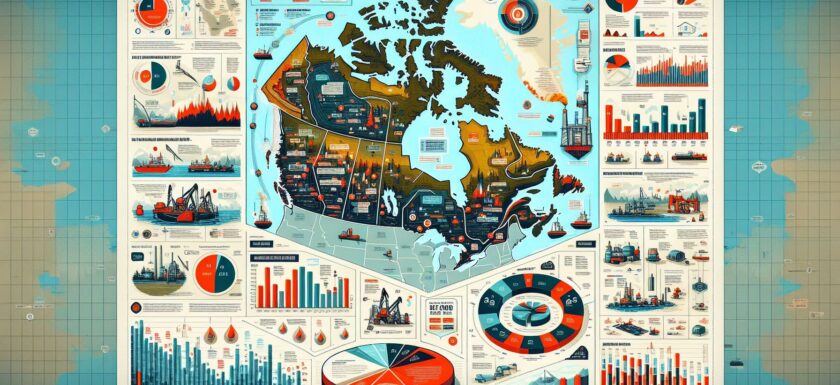[Image Attribution: “Oil Refinery at Night” by Chris Gotschalk, available under CC BY-NC-ND 2.0]
Canada, with its vast landscapes and abundant natural resources, has emerged as a major player in the global oil and gas industry. Positioned as the fifth-largest producer of oil in the world, Canada has built a reputation for its rich energy reserves and advanced extraction techniques. In this blog post, we delve into the intriguing world of Canada’s oil and gas sector, exploring its significance, impact, and potential ramifications on both the national and global scale.
The Canadian Energy Landscape: Exploring Opportunities
Canada is fortunate to possess diverse energy resources, ranging from petroleum and natural gas to uranium and hydroelectric power. These resources play a vital role in the nation’s economic stability and form an integral part of many global supply chains. The oil and gas industry, in particular, has transformed Canada’s economic landscape, driving growth and creating employment opportunities. The immense scale of this industry renders it capable of influencing national policies, international relations, and global energy markets.
Traditional and Unconventional Extraction Techniques
To extract oil and gas reserves, the industry employs a combination of traditional and unconventional methods. Traditional techniques primarily involve drilling wells in conventional reservoirs, allowing hydrocarbons to flow naturally or with minimal assistance. However, Canada’s energy landscape goes beyond these conventional reserves.
Canada boasts significant unconventional reserves, such as oil sands and shale gas. Oil sands, found predominantly in Alberta, require more complex methods like surface mining or in-situ extraction. These techniques have allowed Canada to unlock vast reserves previously deemed unattainable. Shale gas, on the other hand, involves hydraulic fracturing or “fracking,” which efficiently extracts natural gas from shale formations. These unconventional techniques pose unique challenges from both environmental and technological perspectives.
Balancing Economic Growth and Environmental Concerns
The oil and gas industry in Canada faces a delicate balancing act between driving economic growth and addressing environmental concerns. While the sector contributes significantly to the country’s GDP, it also confronts criticism for its ecological impact. Issues such as greenhouse gas emissions, land reclamation, and water usage have sparked debates about sustainability and the industry’s responsibility.
Recognizing the importance of environmental stewardship, the Canadian government has implemented stringent regulations to mitigate these concerns. Carbon pricing, emission reduction targets, and investments in clean technology have all played a role in fostering a greener energy industry. Nevertheless, achieving an equilibrium where economic prosperity and environmental harmony coexist remains an ongoing challenge.
Canada’s Position in Global Energy Markets
Given its status as a major energy producer, Canada’s oil and gas sector significantly influences global energy markets. The United States, as Canada’s prominent trading partner, relies on Canadian oil imports to meet its energy demands. The Trans Mountain Pipeline and the Keystone XL Pipeline are two critical conduits enabling the transportation of Canadian oil to global markets, specifically the United States.
Furthermore, Canada’s proximity to emerging Asian economies makes it a potential player in those markets. Expanding infrastructure and exploring new trade partnerships could open doors for increased exports, diversifying Canada’s energy export destinations beyond its traditional markets.
The Way Forward: A Challenging Landscape
As the oil and gas industry in Canada navigates the ever-evolving energy landscape, it faces numerous challenges head-on. The ongoing transition towards cleaner energy sources, the unpredictability of global oil prices, and geopolitical factors continue to shape the sector’s trajectory. However, Canada’s commitment to innovation and sustainability positions it well to confront these obstacles and seize new opportunities.
In conclusion, Canada’s oil and gas industry remains a critical player in both the national and global contexts. Balancing economic growth, environmental stewardship, and international relations, the sector’s decisions have far-reaching consequences. As Canada progresses towards a greener future, the oil and gas industry will undoubtedly play a significant role in shaping the nation’s path. Through careful planning, technological advancements, and collaborative efforts, Canada can continue to leverage its natural resources responsibly, fostering sustainable development and securing a prosperous future for generations to come.

